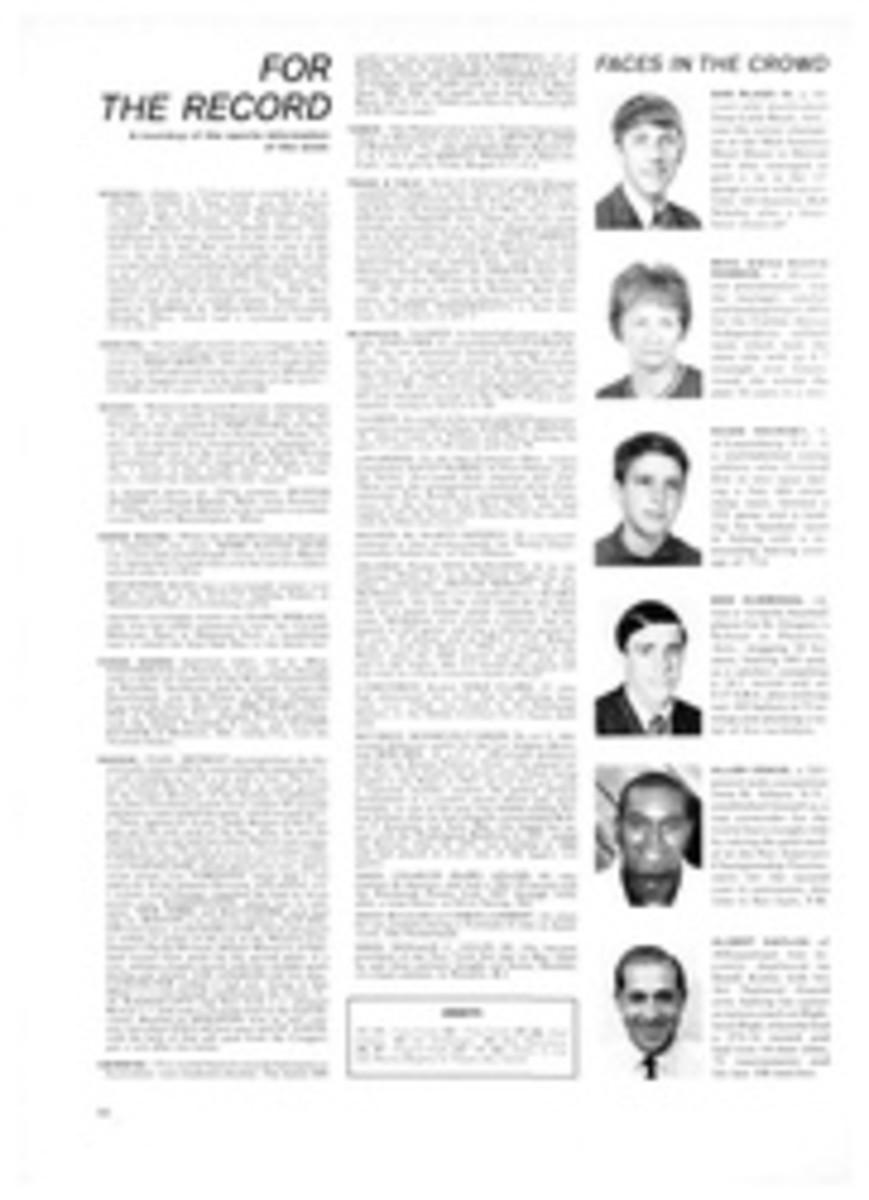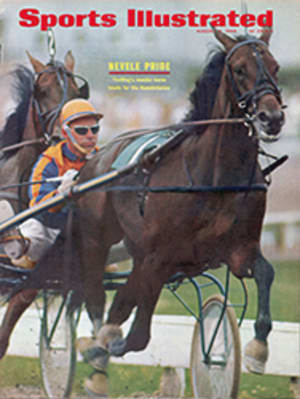
THE BLACK ATHLETE: An editorial
In the past five weeks this magazine has devoted many pages to the publication of Jack Olsen's remarkable series, The Black Athlete—A Shameful Story, a series that has produced a greater reader response than any other story, or group of stories, in SPORTS ILLUSTRATED's 14-year publishing history. This response has been overwhelmingly favorable, but approval or disapproval was never really our primary concern. At a time of pervasive racial crisis in America we felt there no longer was room for the complacency that until now has characterized the world of sport. By exposing the false assumptions on which that complacency was based, we believed we might open a way toward correction of some of the abuses to which the black athlete has been subjected.
In one of the nearly 1,000 letters the series has thus far elicited, the writer—a resident of the state of Washington—said: "I hope that something will be done. It will require a change in attitude and a willingness to change." We now dare to hope, on the basis of the quality as well as the quantity of the reader mail, that such a change not only is possible but is under way. A white mother wrote from Florida: "Thank you for helping the whites to understand the black athlete." A professor at UCLA said: "We can only help each other by understanding each other and we have to teach each other what it means to be black or white. I think your article is a wonderful beginning." A New Yorker wrote: "Thank you for jolting me out of dreamland into reality."
There were, of course, a few flat denials of the validity of Olsen's theme, as well as a trickle (but only a trickle) of irrational "hate" mail. One angry correspondent proposed that we do a series on the problems of a girl at a boys' school, a boy at a girls' school (these are problems?) and a white at a Negro school. Our favorite is the reader who wonders how SI could "so far forget its function and place." Sorry, boss.
Many writers were too thoughtful—and too deeply concerned—to be categorized easily as "for" or "against." The bulk of conditional dissent came from those who felt that white scholarship athletes suffer the same disabilities as black ones (they suffer some of them, but to a lesser degree, and others not at all). Bemoaning the inadequacy of primary and secondary education and the social wrongs inflicted in the ghetto, one writer asked: "Can you really expect a university athletic department to atone for those pre-college years?"
The majority of our correspondents recognized the Olsen series for what it was: a first step, a beginning. What happens next? they asked. Where do we go from here? What can be done to help? A substantial number tried to answer these questions with solutions of their own. The most extreme—a real baby-with-the-bath-water plan—was simply to abolish all athletic scholarships. Obviously, a school cannot exploit a Negro who isn't there. A more realistic suggestion came from an Army sergeant now stationed in Ohio: "If our institutions of higher learning wish to recruit deprived Negroes and exploit them in sports, then they should be prepared to give them the special educational treatment they require.... It should be pointed out to the athlete that failure on his part to enroll in these special classes and maintain a required standard will be cause for his dismissal from the institution." A woman from Columbus, Ohio submitted a remarkable and detailed student-to-student counseling and tutorial plan that could become part of an ultimate solution (19th HOLE, page 67).
Some readers couldn't wait to act. As noted in an earlier issue, Bill Fromm of Kansas City organized the Black Athletes Fund to help disadvantaged Negro high school students only hours after the appearance of Olsen's first article, The Cruel Deception. Since then other groups have been formed with similar missions.
Valuable as such contributions are, they cannot confront the whole problem, a task that ultimately lies with the college and professional sports establishments. It lies there for a very good reason: that's where something can be done, not sometime but immediately. If sport is unable to clean up the country—and certainly housing, primary education, slum rehabilitation and the revitalization of the ghetto are not in its immediate province—it surely can start right now to clean up its own house.
How? Let us begin with the universities and colleges. Most are governed by the National Collegiate Athletic Association, which has fairly stern rules on aid to athletes. But the NCAA rules do not forbid the extension of scholarships beyond eligibility, nor do they forbid the provision of expert counseling and tutoring service for athletes—black or white—whose inadequate preparation or practice-field duties doom them to Mickey Mouse courses or put them far behind their fellow students. The NCAA has no rule that says a university cannot guarantee a scholarship athlete a fair chance at a degree. It has no rule that says the scholastic problems of the athlete are the sole concern of the athletic establishment, nor does it post a KEEP OFF sign for the academic community. Any university or college can establish such programs at will.
Are there impediments? Of course. One is that these reforms will cost money. They sure will—but, as any manufacturer can tell any college president or athletic director, since 1863 it has not been considered acceptable in the U.S. to make profit margins dependent on the labor of slaves. Sport has increased the opportunities for the Negro to go to college. It must now make certain that what is inside that open door is more than a basketball court, a football play book—and a fast exit to oblivion.
As for professional sport, it must recognize that racism, on the field and off—subconscious, subtle or overt—still exists and that it must be stamped out. This is not only the right thing to do but, as Green Bay's Vince Lombardi has demonstrated so spectacularly, it is the efficient thing to do. It is good business. Beyond that, black men who are finished as athletes must be given opportunities as coaches or in the administrative structure that surrounds both professional and college sport.
Every Negro athlete is a potential messenger from the white world to the ghetto—a messenger who can help bridge the intolerable communications gap that exists today. Sport and the universities and business must all ask: What news do we want these messengers to deliver? News that in this field, at least, a black man is recognized as a man, that exploitation has been replaced by human consideration and that equality is more than just a word? Or do we want the message to be: burn, baby, burn?
The choice is ours and—as Prentice Gautt said in the last article of the Olsen series—"The change should start today. Not tomorrow. Today."

